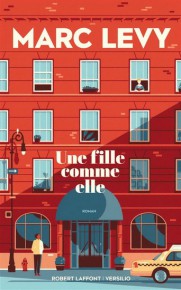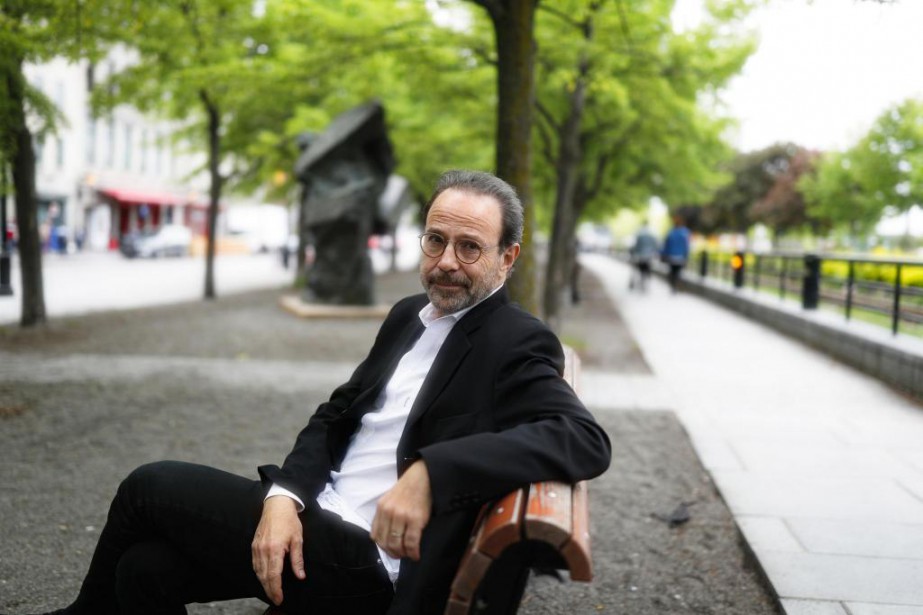
–
–
–
Just in time for the holidays, Marc Levy publishes his 19th novel, A girl like her, whose plot takes place in a charming old-fashioned building in Greenwich Village. At the heart of this building is an old mechanical elevator operated by a lift attendant, Deepak, a faithful witness to the life of a gallery of eccentric and colorful characters. Among them, Chloe, a young actress disabled as a result of an accident, will fall in love with Sanji, nephew of Deepak, a young millionaire recently arrived from Bombay. Romantic comedy, A girl like her is also a novel about difference, as well as a beautiful love letter to New York, where the novelist has lived for 11 years. While in Montreal, Marc Levy told us about his adopted city.
What led you to settle in New York?
There are two sides to the story. The first version is quite glamorous: my wife, Pauline, who was a journalist for a very long time at Paris Match, had studied at the magazine Premiere, At New York. For my part, New York was the first city in the United States where I set foot, at the age of 18. We were both aficionados of this city, to the point that we came to spend all our vacations there. Every time we wondered where to go on vacation, it was New York. When my eldest son was 18, he left the family nest to go to study. On the way back from vacation, Pauline said to me: “Why don’t we go live in New York?” I told the cab to turn around. Really. It was the realization of a dream that I had nurtured for 20 years, and that Pauline nurtured too. And then, inside this version, there is a little sentence that I slipped to you: “When my son left the family nest to go to study …” We must add “in the United States” . It is the other version, unofficial, that of the papa hen seduced by the idea of getting closer to my son.
Does the fantasized New York you visit on vacation live up to the New York you’ve lived in for 11 years?
I believe they are very different. Between the New York of Wall Street and the New York of comedies, there are two worlds that come together. In fact, New York is a city made up of villages, it is a Tower of Babel. There are the various villages of Brooklyn, the villages of the lower part of the city and today, we are even witnessing a re-emergence of the villages of the upper part of the city, in this very urbanized and very professionalized fringe that is Midtown. Neighborhoods like Hell’s Kitchen, which had practically disappeared, are being recreated. It is therefore a New York of villages and diversity.
What has changed in New York in 11 years?
I think people are very, very unhappy. And it’s no longer a question of good Democrats on one side and bad Republicans on the other. I have friends in New York who are Republicans and they no longer recognize their country, their values. Today the United States is on a razor’s edge when it comes to the subtle distinction between patriotism and nationalism. I think America is living what we could have experienced in France if Marine Le Pen had been elected. The United States has slipped into a state of virtual lawlessness in many areas … In the middle of all this, there is an island of die-hard New Yorkers who are putting up resistance and we are not talking about a handful of sores and liberals, but of a population which says: “Whatever the differences and the affiliation of each one, what is happening now has nothing to do with our vision of America. … “
In your novel, you can also feel your love for New York in the descriptions you give of the different neighborhoods. We can guess that you are a great walker who has walked a lot in the city …
Verry much. I love that. What New York offers is this cultural and ethnic diversity where everyone rubs shoulders without having to impose themselves on each other. And at the same time, there is real sincerity in assertiveness in New York City. It is not done to the detriment of the other. The affirmation is all the more sincere and perceptible. I am very addicted to this city.
Was it important for you to show this diversity in your novel?
If I wanted to write this novel today, it is because, quite frankly, we are at a moment of change of worlds. In several countries, including the United States, we can see conservatism coming back with great strides, dragging behind it all that there is of cleavages, separations and distinctions between human beings. We can talk about serious things lightly. Personally, it is through literature and cinema that I discovered desires when I was young. I humbly find that it is the work of people who, like me, do not have a real job, to play the role of social link in their measure. Right now, there is a real reason to write and a real reason to film. And there are several ways to do it: we can denounce or we can “make people want”. I chose the second. I believe that we can speak of difference, of all the differences, within the framework of a comedy or with a deliberate levity. As I got down to writing a novel this year, I asked myself: what is most important? Let people read 400 pages asking themselves, “Who killed whom or who loves whom?” I preferred that people ask themselves: “Who loves whom?” I didn’t have the impression that I was needed to know “Who killed whom?”
______________________________________________________________
A girl like her. Marc Levy. Robert Laffont. 370 pages.

IMAGE PROVIDED BY ROBERT LAFFONT
A girl like her
–
– .
